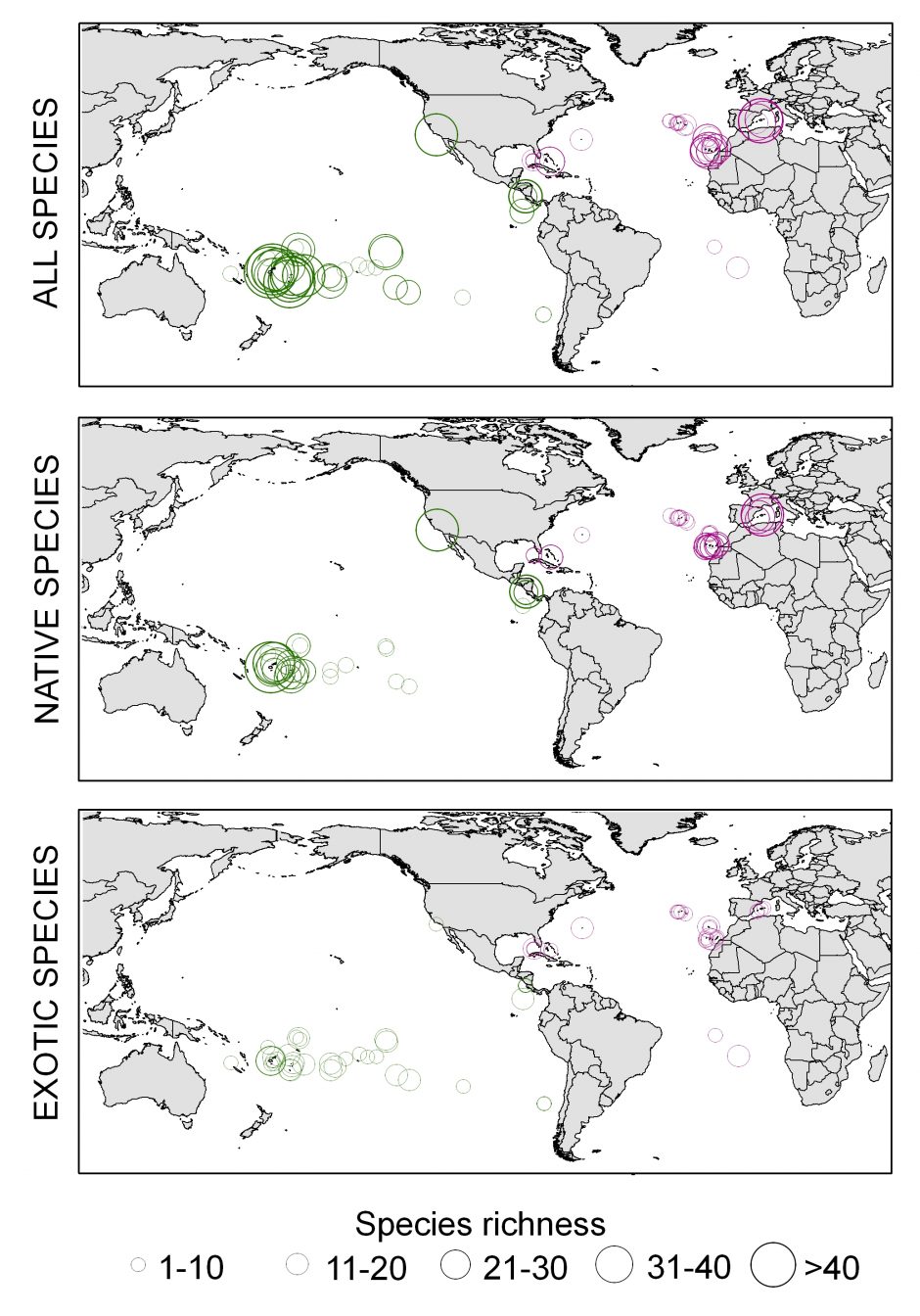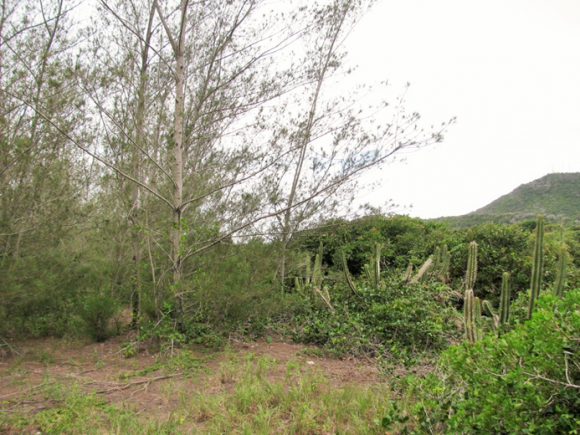5 February 2020 | By Guillaume Latombe
Understanding how species assemblages change in space and time, i.e. species turnover, is a one of the main pillars of community ecology. For communities undergoing invasions by multiple alien species, comparing species turnover for native and alien communities can offer insights into the mechanisms driving community assembly and their susceptibility to biological invasions. Species turnover is usually computed by comparing and averaging pairs of sites, which captures predominantly the contribution of rare species to turnover.
Zeta diversity, a concept proposed by two C·I·B Core Team Members at the time, Cang Hui and Melodie McGeoch (Hui & McGeoch 2014), considers species turnover across any number of sites, and therefore allows users to disentangle the contribution of both rare and common species to turnover. Doing so can therefore unveil additional aspects of how multiple rare and common alien species invade native communities.
Latombe and co-authors show that Pacific and Atlantic islands have similar patterns of ant species turnover and richness, albeit driven by different drivers. Native and exotic species turnover are mostly explained by the same set of variables in the Pacific, but not in the Atlantic. Successful invasion strategies may therefore depend on a combination of factors specific to the region in question. In the Pacific, milder environments and the absence of natives on certain islands enable exotic ants to select the same types of environment as native ants. In the harsher Atlantic Ocean, however, native ant species are likely to be well adapted to local environmental conditions, making it harder for exotics to become established. Exotic ant species, therefore, potentially rely on other attributes to establish, such as a combination of tolerance to a wide range of environmental conditions and human‐mediated colonisation. Using zeta diversity shows that the similarity between drivers of natives and exotics in the Pacific and their difference in the Atlantic is consistent across several levels of rarity and commonness, although assemblages of widespread species (high orders of zeta) appear to be organised more randomly than rare ones.
In another recent paper, Ascensão and co-authors (including Guillaume Latombe) apply zeta diversity to a totally different system, namely alien passerine (Passeriformes) and parrot (Psittaciformes) bird communities, as well as native passerine communities in urban environments in Iberia. Their findings highlight differences between the factors driving compositional dissimilarity for distinct groups of birds, which are underestimated using simple pairwise measures of turnover. While the emerging biogeography of parrots is mainly a reflection of distinctiveness in urban areas, alien Passeriformes are more affected by the natural environment and thus their biogeography may increasingly resemble the one of their native counterparts. Overall, this study shows that identifying the spatial factors that explain levels of compositional dissimilarity of alien species could provide essential information to the design of a network of priority sites for integration into national observatory and monitoring systems for alien species.
“Zeta diversity offers novel perspectives that have the potential to shed new light on patterns of biological invasions at the community level,” says Guillaume Latombe. “We have already applied this concept to a variety of ecological systems, and it is exciting to see how accounting for the rarity and commonness of species in these communities can reveal the interplay between mechanisms of invasion.”
Read the papers
For more information, contact Guillaume Latombe at latombe.guillaume@gmail.com





